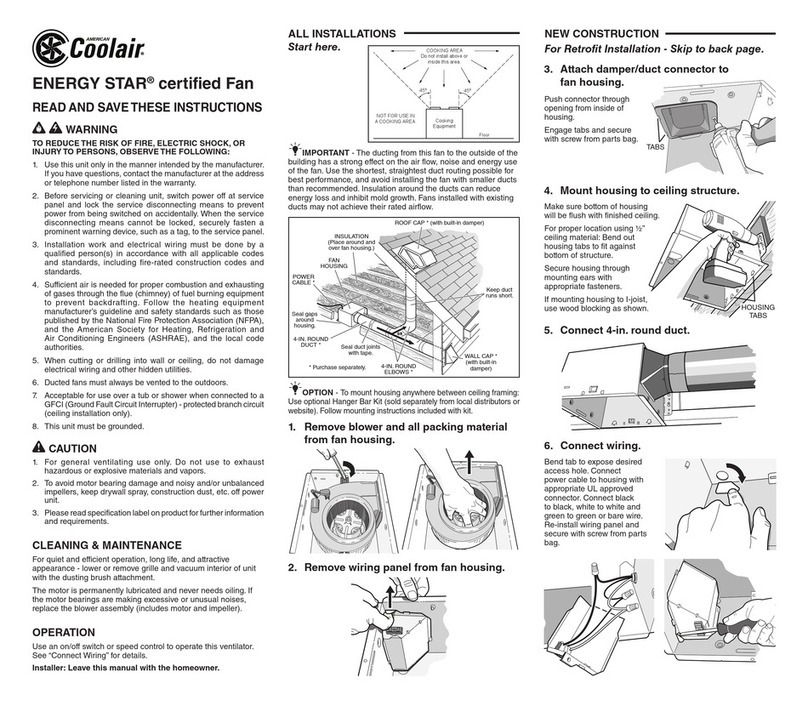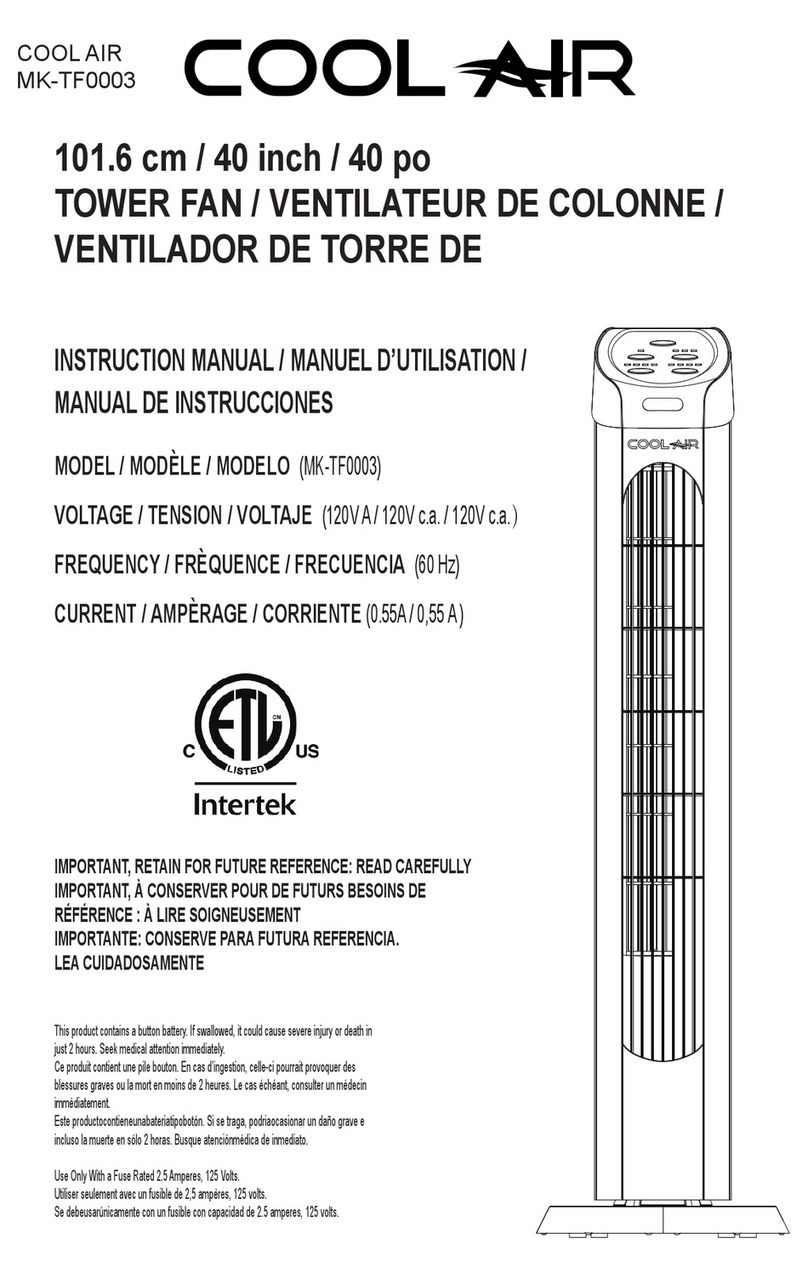
FAN ASSEMBLY AND MOUNTING
Before installation of fan, check carefully for shipping damage which may result in blade misalignment, deformed
parts or other damage. After motor has been mounted, check pulley alignment and belt tension. (For details on
pulley alignment, refer to Page 8 in this booklet.). Before connecting the power source, check motor nameplate to
be sure the correct phase and voltage will be applied. Single phase motors are shipped from the factory wired for
230 volt operation. For low voltage operation see motor manufacturer’s instructions on nameplate. Make sure
propeller turns freely without striking fan frame or any foreign object which may interfere with its operation. Note
direction arrow on orifice to make sure propeller is rotating in the correct direction when power is applied.
Motor Mounting
If the fan and housing are factory assembled, then the motor bracket is already mounted in the correct position and
this section may be skipped. If the fan is not factory mounted in the housing, the motor bracket will need to be
moved from its shipping position.
1. If needed, remove the motor bracket from its shipping position and bolt it to the uprights using the 2nd & 3rd
holes from the bottom of the uprights. Note: It may be necessary to slightly adjust the motor bracket in its slots
to achieve proper belt tension.
2. The rotary belt tensioner (if included) should be mounted on the right upright (when viewed from the back of the
fan — see Figure 5) in the 7th & 8th holes from the bottom.
3. Place the motor on the motor bracket and bolt it down using the hardware
provided. Make sure the motor base remains level.
4. The motor pulley should be placed on the motor shaft with the “set screw” side
of the pulley toward the motor. Using a long straight bar, check the alignment of
the motor pulley and the fan hub pulley. If necessary, loosen the motor pulley
set-screw and/or the motor mounting bolts and adjust as necessary. Re-tighten
pulley set screw and motor mounting bolts. IMPORTANT: Motor bracket bolts
must be secured to maintain proper belt alignment and tension.
Once the motor has been properly mounted and the pulleys have been aligned,
complete the assembly of the fan by threading the belt over the fan hub pulley
groove, motor pulley, and belt tensioner (if included) as shown in Figure 5. For
Model MNBCDD, the tensioner is assembled and should be set for proper belt
tension. If a tension adjustment becomes necessary, refer to Page 8 in this booklet.
Again, check for belt alignment using a straight bar as described above. Next, turn
the blade assembly by hand to insure free rotation. The fan is now ready to be
mounted into the wall housing, if not already factory assembled.
Fan Mounting
If the fan is not factory mounted in the housing, lift the fan (from the outside of the building) and place it inside the
assembled wall housing so that the fan panel is flush with the end of the wall housing. Using twenty 5/16” X 3/4”
bolts and twenty 5/16” whiz-lock nuts, fasten the fan
into place in the housing. Caulk around the
perimeter of the fan panel to seal the housing.
For proper fan operation, the corner deflectors must
be fastened to the fan. First, place the deflector
inside the housing such that the two shorter sides
(with the flanges and mounting holes) are against
the housing, and the longer side is against the fan
panel. The holes in the deflectors should align with
the holes in the housing. Fasten each deflector
using four of the ¼” x ¾” self-tapping screws
provided. The screws must be fastened from the
outside of the housing through the housing and then
through the deflector. See Figure 6.
Weatherproofing
IMPORTANT: To prevent rainwater intrusion, caulk the outside top seam between the top of the fan and the
housing.
Figure 5
Page 4
Figure 6
Corner
Deflector
¼” x ¾”
Self-Tap
Screws


































